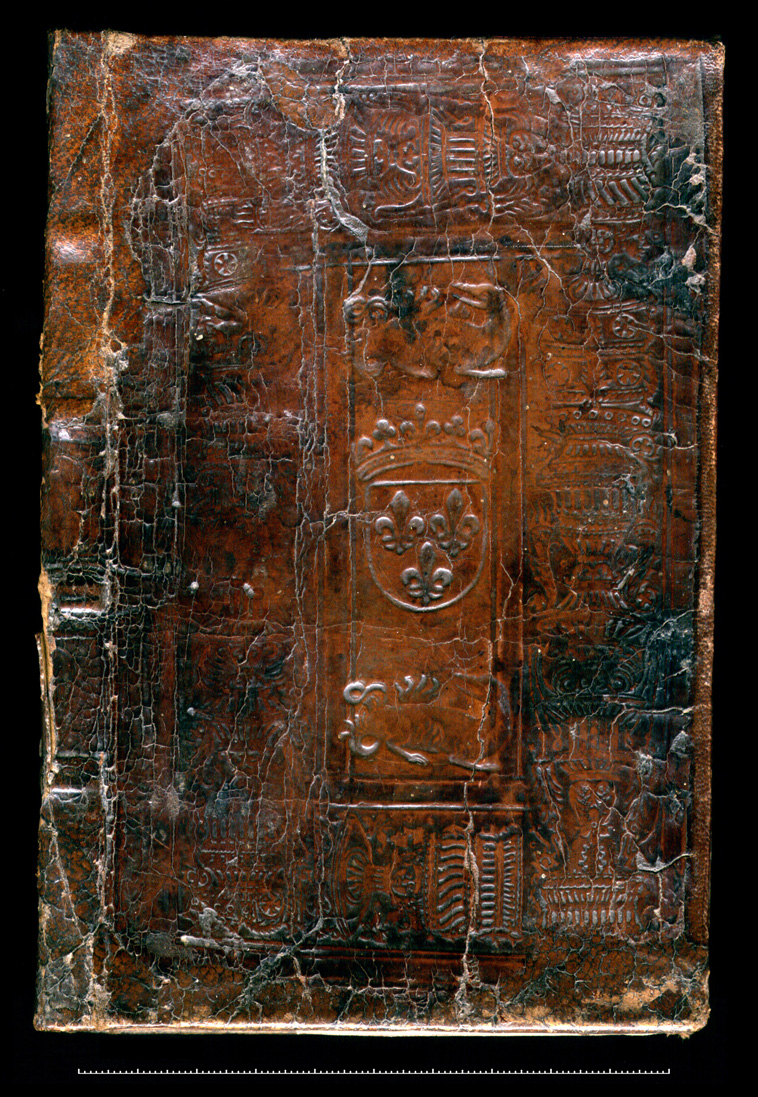

| The decorative border on the binding shown above has been created with a large roll or roulette. In the BSG catalogue we find it referred to as roulette renaissance, or more precisely, renaissance à vasques. After searching high and wide for this kind of decoration on early 16th century bookbindings I soon discovered that the design was an exact copy of a decorative panel found in many editions of the Book of Hours from this period. I later found that James Basil Oldham, (English Blind-Stamped Bindings Cambridge University Press, 1952) had made the same comparison of printed decorative panels and blind-stamped tooling but that no one seems to have linked the renaissance roulette to this precise panel. A study of the vast array of these roulettes shown in Denise Gid's catalogue soon reveals that almost all of them probably derive from one ancestor that is that which copies the original printed panel most closely. I must thank again Marianne Hansen, Special Collections Librarian at the Bryn Mawr College Library for sending me a good high resolution copy of this decorative panel which is from a 1512 Paris edition of Simon Vostre's Hore Marie virginis scd[u]m vsum Saru[m. |
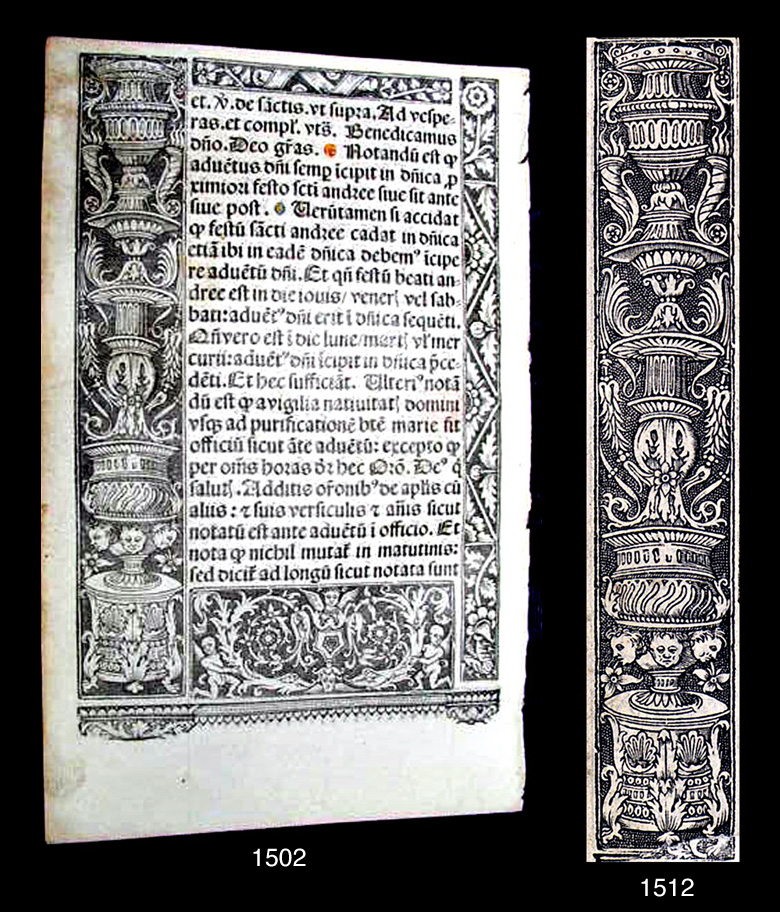
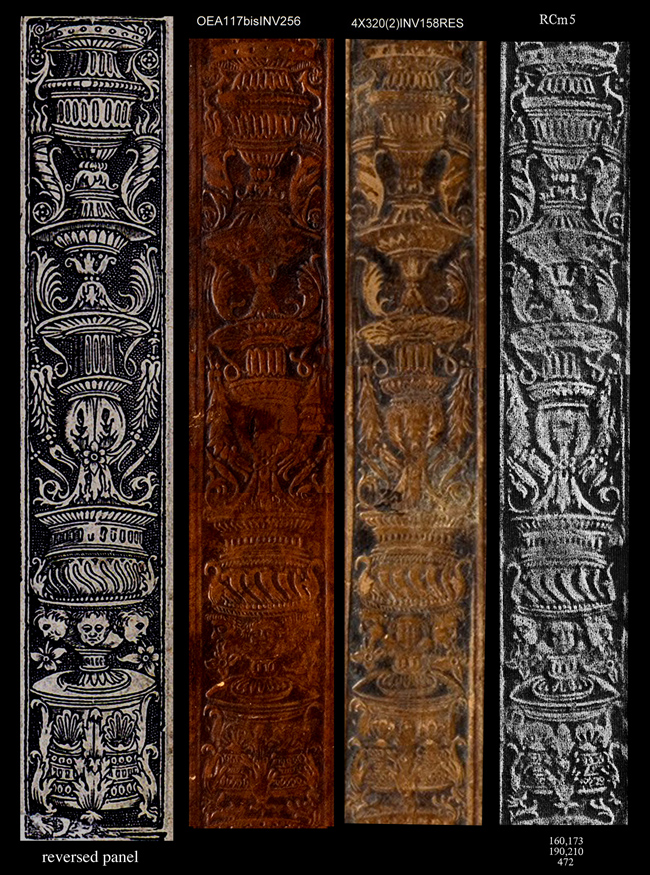
| In figure 3, I show a rubbing (RCm5) from Denise Gid's catalogue which I think is the closest of all the renaissance roulettes in that catalogue, to the original panel. I won't go into all the marvelous details that can be found in this panel. This could be a whole research topic of it's own. Nor will I dwell on the subject of who orignaly designed this panel. It may be that this same panel is found in even earlier publications, however a number of coincidental facts lead me to surmise that the renaissance roulette did not appear until around 1515 or later. The RCm5 example is sometimes found on bindings together with the roulette d'ananas entrelacés AEa1 which is almost certainly post 1515. On the binding shown at the top of this page we see an RCg3 renaissance à vasques example along with the armes of François Ier, this binding may actually date to 1520 or later. What ever the case may be, this roulette became very popular and was in use for many decades to follow as well as evolving into a multitude of spin off types that then transformed into something different again. It's importance in our present work is however in relation to the Louis XII and François Ier bindings. Gid's RCg3 model is the closest to the No 37 example, at first I had some doubts as the sizes to not match up perfectly although the details appeared identical. Fortunately Denise tells us in the beginning of her catalogue that the roulette imprints may vary in length due to the condition and dampness of the leather when the tooling is applied. |
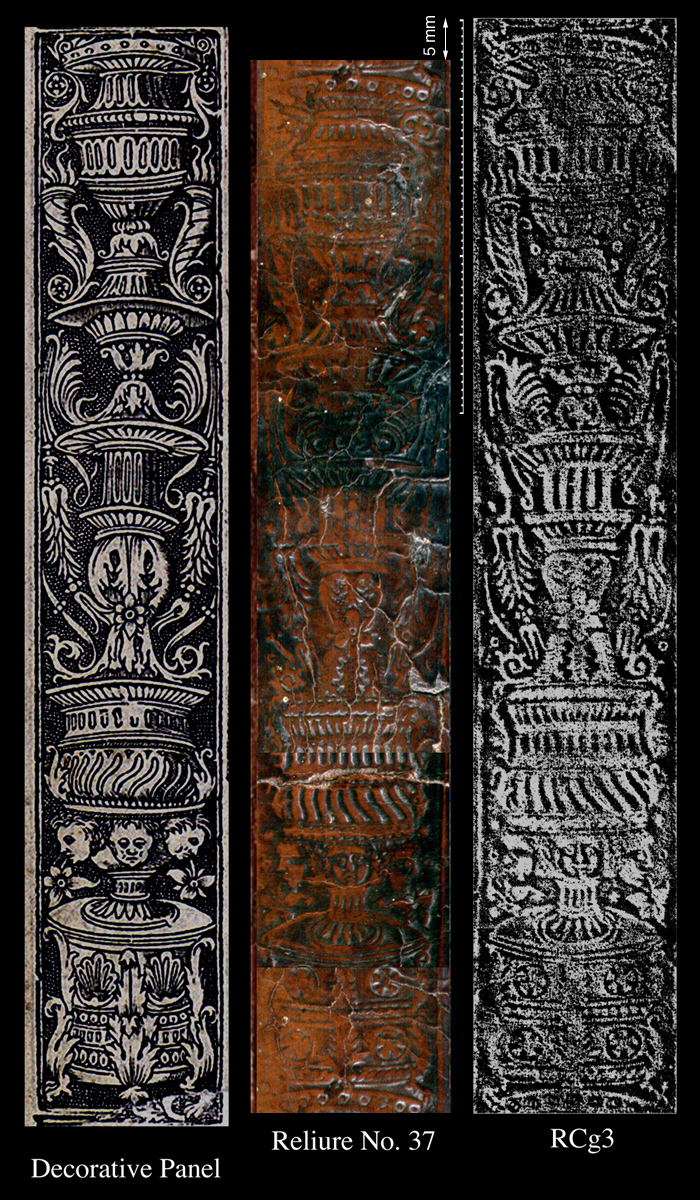
| Now that we have confirmed that renaissance roulette of binding No. 37 is type RCg3, this opens the way to discovering more tools associated with these bindings. Gid lists 4 examples (174, 320, 389, 486), in the Mazarine catalogue that bear the RCg3 roulette. I was hoping to find one in the BSG collection that would then give us a photo of another specimen. Fortunately in the data of the first on the list, item 174, we find a comparative reference to a folio sized BSG example (Rés. C fol.7 inv. 11.) |
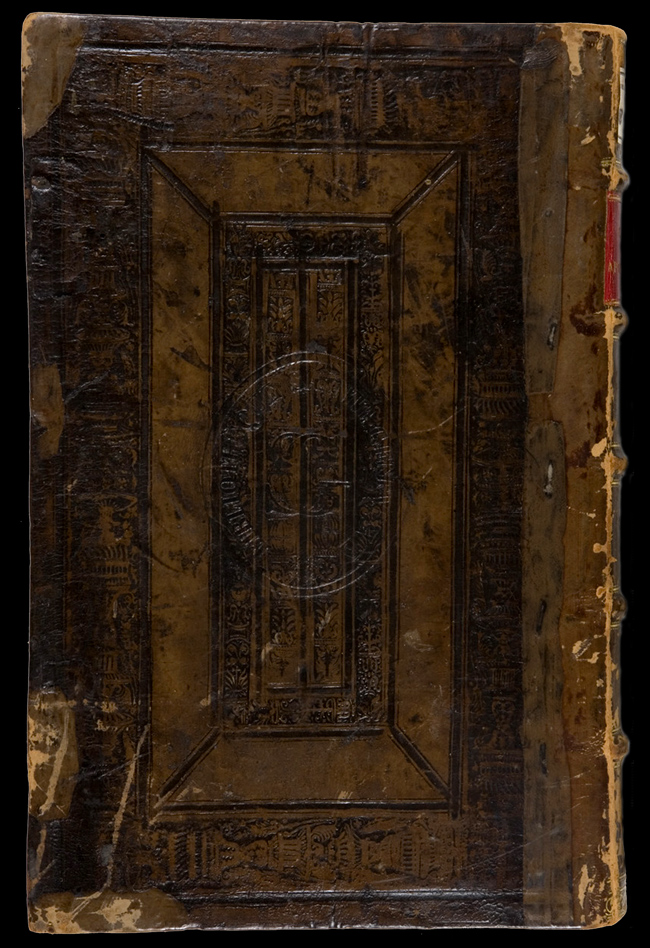
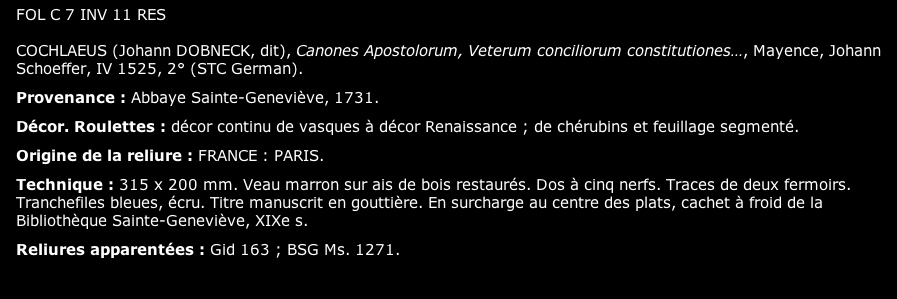
| On the next page we will look at the other tools found on this binding, which dates to no earlier 1525, what we are going to discover here are the tools and methods that followed the 1515 roulette revolution. |
| Go to Digital Alchemy | return to the home page of cyclopaedia.org |